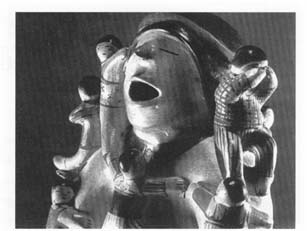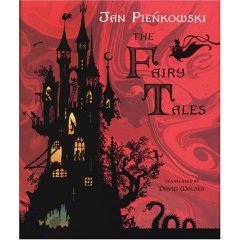
Forgotten Bookshelf: The Story Vine by Anne Pellowski
So: I'm sure some of you are wondering what the heck this picture is about. Okay, fine. So I'm lazy. There's no picture of The Story Vine on Amazon or Powell's, my digital camera's out of batteries and I couldn't take a picture of my own copy, and after doing a Google Image search for "Anne Pellowski," this is the best I could come up with. This. It's a close-up shot from a folk sculpture of a storyteller -- see how the teller's mouth is open, and how there are lots of little people on her shoulders listening? Yeaaaaah, now you get it. I think it's Native American, but don't quote me on that. But enough of this -- on with The Review!
Oooooh, Anne Pellowski – the person I want to be when I grow up. (Erm, and maybe Virginia Hamilton, too.) This woman travels the globe for UNICEF, collecting folklore and teaching early literacy skills in economically-undeveloped countries. Or at least she used to. Pretty darn cool job, if you ask me.
Anyway, Pellowski has published several books of the many folktales she’s collected during all her world travels, and The Story Vine is one of the more stellar volumes. If you want to spend any time telling stories to children, you need this book.
Now, I must warn you – this isn’t like most traditional folklore anthologies. All of the stories contained in this book use some little “extra” to embellish it – whether it be a string-figure, a folk-doll, sand-drawings, or a simple fingerplay. Yeah, yeah, yeah – I know that there are lots of books out there that have stories like this (and which are kind of hokey), and I was skeptical of The Story Vine at first as well – but the amazing thing is that Pellowski manages to preserve an authentic sense of the culture from which she collected each story. She doesn’t just list each story with a title and a little “From Such-and-such Country” – she includes an brief essay explaining the history and significance of each particular type and style of story. You don’t just get a draw-and-tell story; you get anecdotes about Aboriginal Australians giving draw-and-tell stories all night long! You don’t just get a story that uses dolls; you get an essay about the origins of worry dolls and their significance to the indigenous peoples of



No comments:
Post a Comment